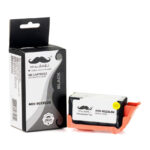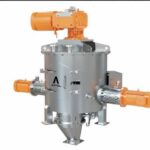The key to the finance industry of the future is cross-functional management, skill combination building, and solid data foundation construction. That’s what the successful companies of tomorrow will be different from. Being really good at one or two things won’t likely cut it. Working alone won’t help either.
Without a systematic approach, managing the procurement process can be error-prone and time-consuming. For example, transposition errors resulting from manual data entry by internal teams can cause inaccurate orders and payments. Errors of this nature may result in delays and extra costs. The complete procurement process, from requisitioning to payment, can be streamlined with integrated business solutions such as a procure-to-pay (P2P) software comprehensive solution. Thanks to this automated workflow, your internal teams operate more efficiently.
Procure To Pay for Software
A complete set of tools known as procure-to-pay (P2P) software automates and streamlines the entire procurement process, from requesting products and services to making supplier payments. It facilitates cost management, increases productivity, and gives companies more command over their supply networks. The landscape of P2P software is evolving quickly as more recent offerings provide early-stage and mid-market businesses with a less complicated substitute for outdated software.
It is crucial to select P2P software that is an integrated business solution and a good fit for your company. One essential component of P2P software is purchase order management. It enables businesses to generate, oversee, and monitor POs.
The process of processing invoices makes it easier to verify, validate, and pay bills. It ought to have an approval workflow, automatic data collection, and the capacity to link POs to invoices and receipts.
Collaboration, performance indicators, and vendor information all depend on effective supplier management. Relationships between vendors are strengthened by efficient supplier management.
Spend analysis reveals how an organisation is allocating its financial resources. Through the use of reporting and analytics, organisations can obtain practical insights into their procurement efforts.
Integrating P2P software with other systems, such as the ERP, requires integrated business solutions. This guarantees a smooth data flow for efficient spend management. Security in P2P applications is critical. Access restrictions and complaints, as well as adherence to data protection laws, must be provided.
Being user-friendly is crucial. Employee dissatisfaction with P2P software could result in non-usage and compromise compliance. More recent P2P software frequently has this feature.
The user-friendly interface of procurement modules makes them an easy first point of contact for staff members to make purchases. This resolves the issue of multiple stakeholders’ influence throughout the procurement process.
Procure-To-Pay Best Techniques For Overcoming Obstacles
The procure-to-pay (P2P) process flow can be greatly enhanced, expenses can be decreased, and overall procurement operations can be improved by implementing best practices. Consider the following important procure-to-pay best practices:
Putting Into Practise a Centralised Procurement Approach
Simplify The Approval And Requisition Procedure: Automate the processes for creating and approving requisitions to reduce manual labour and shorten the procurement cycle. To avoid delays, create distinct approval stages and ensure evaluations are completed on time.
Enforce Adherence To Rules And Policies: To guarantee adherence to corporate policies, industry norms, and legal mandates, clearly define procurement policies and procedures. Establish internal controls to stop fraud and unapproved spending.
Defining Precise Vendor Management Policies
Standardise The Administration And Onboarding Of Suppliers: To save time and ensure consistent supplier data, establish a centralised supplier database and standardised onboarding processes. Use procure-to-pay evaluation indicators for supplier performance to find and keep trustworthy partners.
Enhance Your Sourcing and Negotiating Tactics: Conduct extensive market research to determine the best suppliers and optimise pricing. Use negotiating strategies to obtain advantageous terms and conditions, such as early payment incentives and volume discounts.
Put Supplier Relationship Management (Srm) Into Practice: Build trusting relationships with important suppliers by encouraging candid dialogue, frequent evaluations, and cooperation on projects aimed at enhancing performance. Strong supplier relationships can all contribute to stronger supply chain resilience, innovation, and pricing.
Processing Purchasing Orders Automatically
Use an automated AP management system to automate the PO procedure. Verify that the options for two-way and three-way matching meet your company’s requirements.
Accept Electronic Payments and e-Invoicing: Use e-invoicing to automate invoice processing, minimise human data entry, and eliminate paper-based procedures. Use electronic payment options to expedite payments and lower processing expenses.
Establishing Robust Internal Controls
Leverage Technology And Automation: Use procure-to-pay software to automate processes, optimise workflows, and obtain real-time visibility into the procurement process. By automating data matching, routing approvals, and matching bills to purchase orders, data entry errors are eliminated, and productivity is increased.
Ongoing Observation And Enhancement: Consistently assess and analyse the peer-to-peer (P2P) procedure to pinpoint opportunities for enhancement and carry out remedial measures. To keep track of developments and spot areas for improvement, monitor key performance indicators (KPIs) such as cycle times, expenses, and supplier performance.
Employee Empowerment and Training: Provide training to ensure that end users and members of the procurement team are aware of the P2P procedure, rules, and software tools. Give staff members the authority to decide on purchases wisely while staying within permitted boundaries.
Conclusion
By implementing a strong procure-to-pay (P2P) software system, organisations can dramatically improve overall efficiency, cut costs, and streamline their procurement processes. Achieving maximum P2P potential requires implementing an integrated business solutions strategy. Through the smooth integration of P2P with other systems, such as ERP, companies can attain a comprehensive understanding of their financial functions.
The finance sector of the future necessitates a solid data foundation, a cross-functional strategy, and a combination of capabilities. Effective implementation of P2P software forms the basis for this construction. It gives companies the ability to make streamlined and data-driven decisions, foster better teamwork, and eventually spur economic expansion.
Organisations that use integrated business solutions and adopt P2P best practices will be well-positioned for long-term success as the procurement landscape continues to change.



